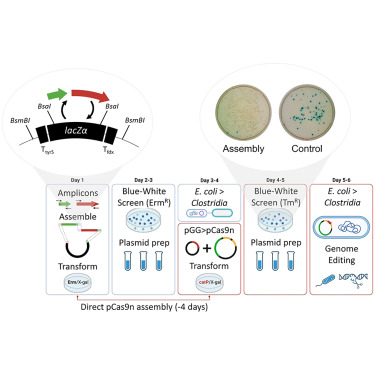
A pioneering research effort has developed a variant of Escherichia coli (E. coli) termed Syn57, which functions with a synthetic genetic code comprising only 57 codons, in contrast to the conventional 64. This accomplishment by scientists at the Medical Research Council’s Laboratory of Molecular Biology in Cambridge, UK, represents the most significant genetic recoding in a living organism to date. By streamlining the genetic code, researchers have created opportunities for the incorporation of unnatural amino acids, potentially paving the way for a new era of adaptable and programmable biological systems.
This initiative builds upon earlier research by the team, which in 2019 unveiled Syn61, a strain featuring 61 codons. The push for further genetic compression was motivated by curiosity regarding the limits of genetic code reduction and its viable applications. Wes Robertson, a prominent synthetic biologist at the LMB, mentions that a reduced codon usage could enable cells to conduct functions typically performed in chemical flasks, but in a more sustainable and programmable way.
To construct Syn57, the team carefully modified over 100,000 codons within the 4-million base pair genome of E. coli. The procedure included the removal of selective codons for serine and alanine, alongside one stop codon, effectively creating genomic space. The genome was segmented into 38 parts, each around 100,000 base pairs long, and synthesized independently via yeast recombination to ensure precision in the recoding approach.
This ambitious project managed to achieve success for 75% of the genome. For the remaining 25%, the team utilized innovative linkage mapping techniques to identify and rectify the problems, ultimately assembling the complete genome by merging the correctly synthesized fragments. Although Syn57 showed a slower growth rate compared to the wild-type strain, it was sufficiently robust for laboratory studies.
The recoding initiative not only envisions the creation of virus-resistant organisms but also seeks to establish a “genetic firewall” to control gene transfer with natural E. coli strains. Martin Spinck, a collaborator on the project, emphasizes the opportunity to reassign the seven freed codons to introduce unnatural amino acids, revealing unprecedented biological capabilities.
Farren Isaacs from Yale University recognizes this as a substantial advancement, stressing that the true significance lies in the new abilities these genetically recoded organisms may showcase. Repurposed codons could facilitate the development of synthetic proteins, improved biocontainment strategies, and enhanced resistance to viral threats.
Nevertheless, Isaacs underscores the necessity for additional experimentation. Future research may involve the removal of tRNAs and release factors linked to the eliminated codons to examine cellular responses, which is vital for grasping the functional viability and potential of these synthetic organisms.